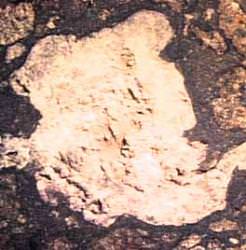Way back in the beginning of the solar system, about 4.5 billion years ago, the first materials began to condense from gasses into solid particles. These materials were rich in calcium and aluminum. Astronomers have thought that at least some of the solar system’s oldest asteroids should have plenty of these two elements, but no asteroids had ever been found that were particularly rich in them. Until now. A team of scientists recently identified three previously unknown asteroids that appear to be among the oldest objects in our solar system.
Using visible and infrared data from telescopes on Mauna Kea in Hawaii, astronomers from the University of Maryland found asteroids that appear to relatively unchanged since they formed in the early stages of our solar system’s development. “We have identified asteroids that are not represented in our meteorite collection and which date from the earliest periods of the Solar System,†said research astronomer Jessica Sunshine. “These asteroids are prime candidates for future space missions that could collect and return samples to Earth, providing a more detailed understanding of the Solar System’s first few millions of years.â€
Meteorites found on Earth do contain small amounts of calcium and aluminum. Called calcium aluminum inclusions (CAIs) these white, millimeter-sized objects are found in meteorites, often together with chondrules, which are small balls of iron or magnesium.
In 2002, an international team of scientists accurately dated CAIs at 4.57 billion years, making them the oldest known objects in the solar system. When the famous Allende meteorite was found in 1969, scientists first recognized these inclusions matched many properties expected to be found in the early solar system.
Sunshine’s team used the SpeX instrument at the NASA Infrared Telescope facility to look at the surface of asteroids, looking for “fingerprints†indicative of CAIs. Sunshine said that several asteroids have been found that contain 2-3 times more CAI materials than any known meteorite. “It appears ancient asteroids have indeed survived, and we know where they are,†she said.
Original news source: Eureka Alert


Lets see… would it be worthwhile to examine material formed within a million years of the supernova that created dust cloud Sol?
It could be interesting, as more CAI-type asteroids are plotted, should some general pattern/location be identified by dispersal.
The initial composition of solar system is important to know akin to genesisi project.
This is a very intriguing find. It’d be interesting t osee how this porject progresses
would it be worthwhile to examine material formed within a million years of the supernova that created dust cloud Sol?